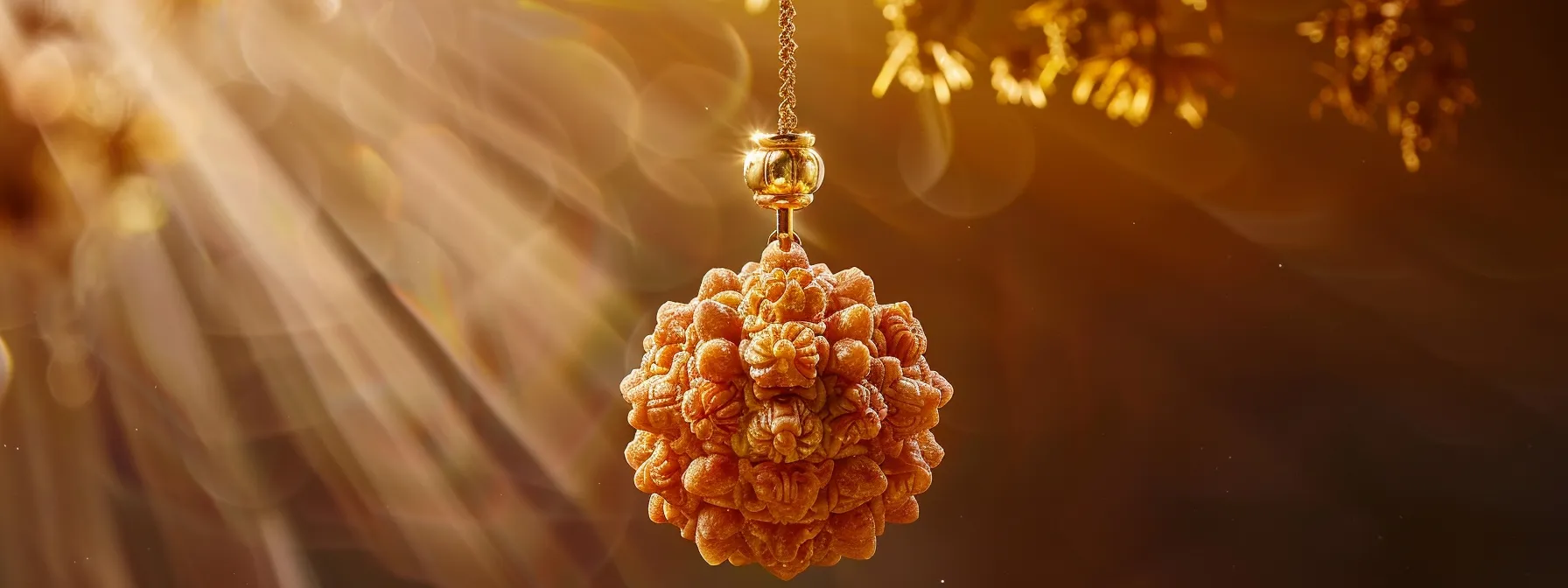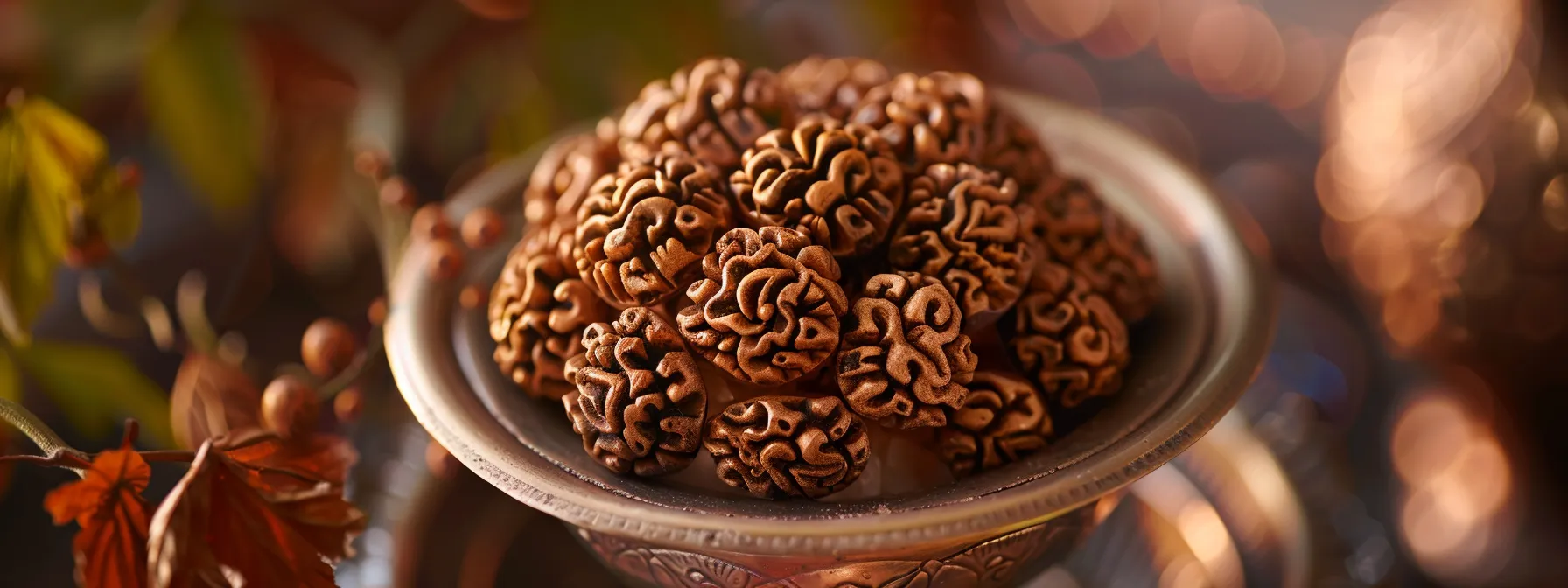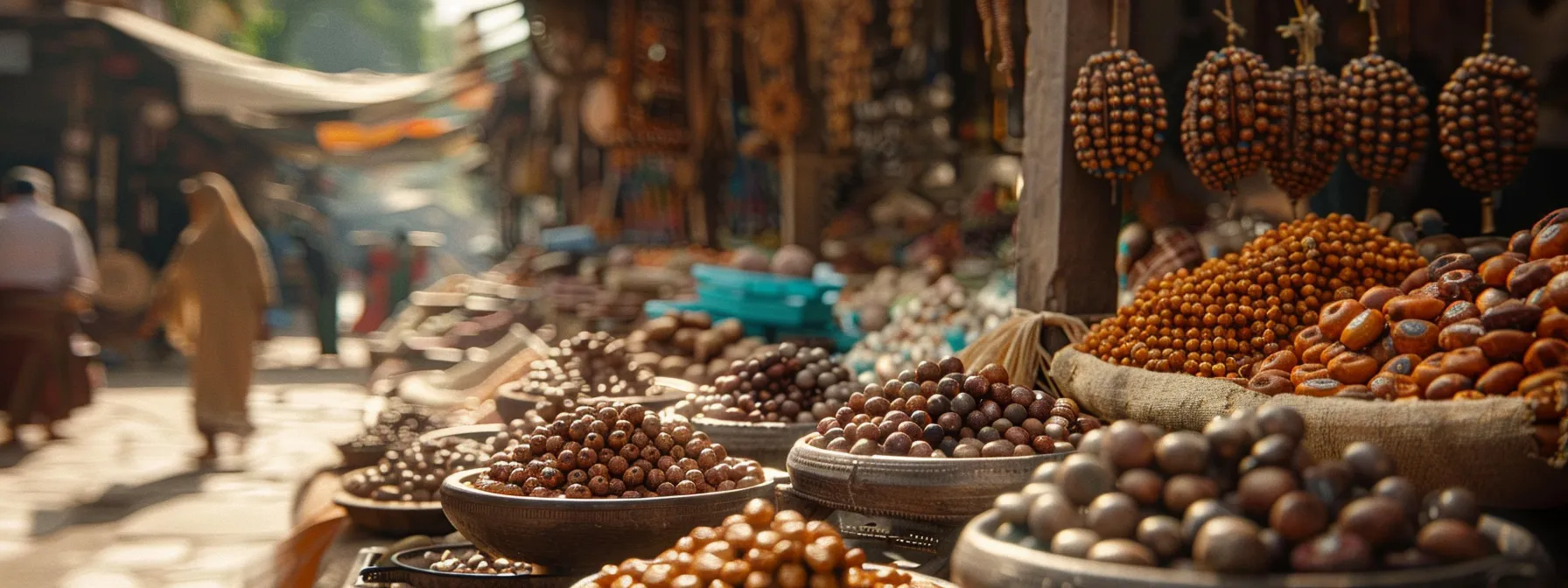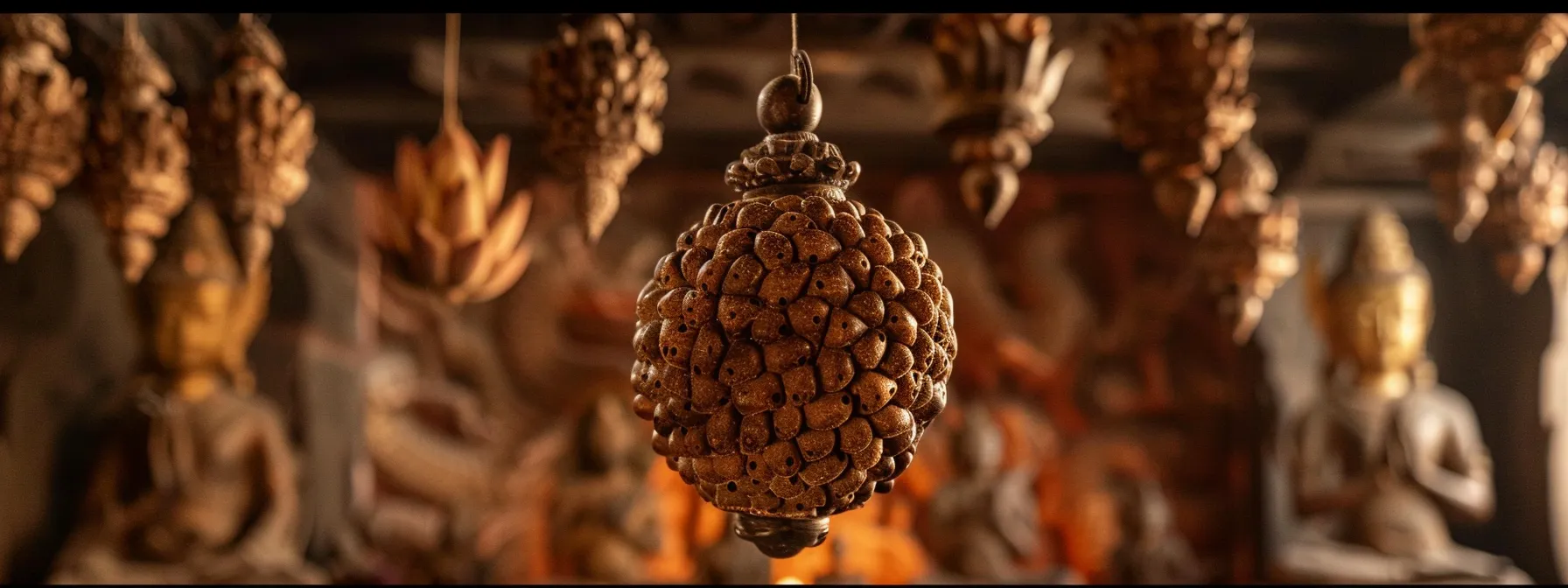Rudraksha Therapy
Exploring the Historical Significance of Fifteen Mukhi Rudraksha
The Fifteen Mukhi Rudraksha is often associated with various beliefs and practices, yet many remain unaware of its rich historical significance. This article will trace its origins, explore its presence across cultures, and discuss its role in historical practices and rituals. Readers will gain insights into how this powerful seed can influence peace and well-being, supporting not only the soul but also the immune system. For those seeking deeper connections with ancient traditions, understanding the significance of the Fifteen Mukhi Rudraksha can provide valuable guidance on their journey toward inner harmony.
Tracing the Origins of the Fifteen Mukhi Rudraksha

Early mentions of the Fifteen Mukhi Rudraksha in sacred texts highlight its connection to divine energy and the spiritual benefits it offers. Mythological narratives surrounding its emergence reveal insights into its revered status, while teachings from ancient spiritual practices emphasize its role in enhancing energy flow, particularly in the anahata chakra. Historical accounts from sages and scholars further substantiate its significance in rituals, including prana pratishtha, especially among those who seek deeper connections along the Ganges.
Early Mentions in Sacred Texts
Early sacred texts of Hinduism, including the Puranas, reference the Fifteen Mukhi Rudraksha, highlighting its vitality in achieving inner peace. These ancient scriptures describe the bead as a divine manifestation of Lord Brahma, symbolizing creation and cosmic energy. The text emphasizes the importance of this mukhi in facilitating spiritual progress for practitioners seeking tranquility and spiritual elevation.
The Fifteen Mukhi Rudraksha is mentioned in relation to various rituals, underscoring its role in enhancing psychic abilities. Practitioners have long utilized this bead to deepen their meditative practices, allowing for a profound connection with the self and the universe. Such references reveal the historical importance of this mukhi in cultivating spiritual awareness and personal transformation through dedicated usage.
Additionally, the spiritual significance of the Fifteen Mukhi Rudraksha is elaborated upon in various commentaries by sages and scholars throughout history. They describe its capacity to align energies within the body, particularly enhancing the anahata chakra, which leads to a more harmonious life. This highlights the practical benefits of incorporating the Fifteen Mukhi Rudraksha into daily spiritual practices, making it a valuable tool for those seeking a deeper connection with their innermost being.
Mythological Narratives Surrounding Its Emergence
Mythological narratives describe the Fifteen Mukhi Rudraksha as a powerful symbol of divine energy, often linked to the legendary Gaurishankar. According to ancient tales, this unique bead emerged from the cosmic dance of Lord Shiva and Goddess Parvati, invoking blessings upon those who embrace its spiritual practice. The narrative underscores its significance in healing and transformation, especially for individuals seeking relief from various ailments, including disease.
Furthermore, the Fifteen Mukhi Rudraksha is believed to aid in balancing the respiratory system, drawing on its mythological roots connected to the life force. Legends state that those who meditate with this bead can enhance their respiratory health and overall vitality through dedicated spiritual practice. By aligning energies, practitioners experience renewed vigor and can overcome challenges related to health and wellbeing.
These stories not only highlight the reverence of the Fifteen Mukhi Rudraksha but also provide practical insights into its use in daily rituals and meditation. The blessings associated with this bead act as a guide for individuals seeking to deepen their spiritual journey and connect with their highest selves. By integrating the teachings found in these narratives, practitioners can experience profound transformation and inner peace:
Significance in Ancient Spiritual Teachings
The Fifteen Mukhi Rudraksha holds a significant place in ancient spiritual teachings, particularly in connection with Ayurveda, which emphasizes the harmony between body, mind, and spirit. It is believed that wearing this bead can enhance wisdom and clarity of thought, allowing practitioners to navigate life’s challenges with greater ease. Traditionally, it has been used to support overall health, particularly in addressing respiratory issues such as asthma, enabling individuals to experience improved well-being.
This revered bead also plays a role in protection against negative influences, such as the evil eye. Ancient teachings indicate that the Fifteen Mukhi Rudraksha serves as a potent shield, helping individuals maintain their spiritual equilibrium and emotional health. Regular meditation with the bead fosters a deep connection to one’s inner self, empowering individuals to dispel negativity and cultivate positive energy in their lives.
Moreover, in spiritual practices, the Fifteen Mukhi Rudraksha is often associated with the lingam, representing divine consciousness and the union of the material and spiritual realms. Engaging with this bead encourages a deeper understanding of one’s purpose, allowing practitioners to align with their highest potential. By incorporating the Fifteen Mukhi Rudraksha into daily routines, individuals can experience transformative growth while deepening their connection to ancient wisdom teachings.
Historical Accounts by Sages and Scholars
Historical accounts by sages and scholars illuminate the profound impact of the Fifteen Mukhi Rudraksha in spiritual practices. These revered figures have emphasized its ability to reduce stress and promote mental clarity, making it a valuable resource for individuals seeking emotional balance and relief from daily challenges. Through regular prayer and meditation with this bead, practitioners report enhanced inner peace and an overall sense of well-being.
Scholars have documented the physiological benefits associated with the Fifteen Mukhi Rudraksha, particularly in relation to blood pressure regulation. Research indicates that the bead‘s energy aligns with the body’s natural rhythms, contributing to healthier cardiovascular function. By integrating this spiritual tool into their routines, individuals can experience significant improvements in both physical and mental health, reducing the burden of stress-related ailments.
The Pashupati connection is another focal point in historical narratives, linking the Fifteen Mukhi Rudraksha to increased compassion and empathy towards oneself and others. Sages taught that wearing or meditating with this bead facilitates a deeper understanding of universal energies, fostering a spirit of kindness. This compassionate approach helps practitioners navigate life with greater positivity, reinforcing their spiritual growth and interpersonal relationships.
As the exploration of the fifteen Mukhi Rudraksha unfolds, its significance ripples through time. Cultures across the globe have embraced its power, each adding a unique thread to its rich tapestry.
Historical Presence in Different Cultures

Historical Presence in Different Cultures
The Fifteen Mukhi Rudraksha has significantly influenced ancient Indian traditions, particularly in puja practices dedicated to various deities. Its recognition extends to neighboring civilizations, highlighting its importance in regional spiritual customs. The bead‘s role in cross-cultural exchanges emphasizes its relevance across cultures, while depictions in historical art and architecture showcase its lasting legacy in representing spiritual concepts, including the third eye and the alleviation of pain.
Influence on Ancient Indian Traditions
The Fifteen Mukhi Rudraksha bead has played a vital role in ancient Indian traditions, particularly in the context of spiritual practices including meditation. It is considered a powerful shield against negative energies, allowing practitioners to achieve a deeper state of focus and awareness during their meditative sessions. As outlined in the Vedas, the bead is instrumental for those seeking to elevate their spiritual journey and enhance their inner peace.
This bead is also associated with leadership qualities, helping individuals cultivate confidence and clarity in decision-making. Ancient texts suggest that wearing the Fifteen Mukhi Rudraksha enables individuals not only to channel their energies more effectively but also to inspire those around them. Its historical significance demonstrates how this bead has been embraced across communities seeking growth and guidance in leadership roles.
Recognition in Neighboring Civilizations
The recognition of the Fifteen Mukhi Rudraksha extends beyond Indian traditions, finding a place in various neighboring civilizations. In cultures influenced by Shaivism, this bead is esteemed not only for its spiritual benefits but also for its protective properties against negative energies, including those associated with demons. Practitioners in these regions often incorporate the Rudraksha into their daily mantra recitations, enhancing their meditative experience and fostering a deeper connection to the divine.
In countries close to India, such as Nepal and Tibet, the Fifteen Mukhi Rudraksha is regarded as a powerful talisman. It is commonly used in conjunction with copper offerings during rituals. This combination amplifies its effectiveness, as copper is believed to possess conductive properties that enhance spiritual vibrations. Such practices reflect the bead’s significance in leading individuals toward self-realization and improved wellbeing.
Cross-Cultural Exchanges and the Rudraksha
Cross-cultural exchanges have significantly influenced the reverence for Fifteen Mukhi Rudraksha, highlighting its importance within Hindu mythology and beyond. In various ancient myths, this bead is acknowledged for its divine qualities and its ability to enhance intuition. As global awareness of these spiritual practices grew, the Rudraksha became a symbol of interfaith dialogue and shared beliefs in holistic wellbeing.
The connection between the Fifteen Mukhi Rudraksha and shaligram has been pivotal in expanding its acceptance across cultures. Both spiritual objects are revered for their unique properties, with shaligram representing Lord Vishnu in Hindu traditions. The synergy between these two sacred symbols fosters a deeper understanding of spiritual practices, encouraging practitioners to explore how the Rudraksha can influence the circulatory system and overall health through consistent utilization.
Furthermore, the exchange of spiritual knowledge facilitated the incorporation of the Fifteen Mukhi Rudraksha into numerous rituals beyond Hinduism. Communities worldwide have recognized the bead‘s capacity to promote emotional balance and spiritual clarity. As a result, it serves as a practical tool for individuals seeking to overcome challenges in their lives, drawing from age-old teachings interwoven across diverse cultural landscapes.
Depictions in Historical Art and Architecture
Depictions of the Fifteen Mukhi Rudraksha in historical art and architecture illustrate its enduring significance in spirituality. These representations can be found in various temples and religious sites where artisans have intricately carved the bead alongside images of revered gurus. Such artistic expressions often accompany ritualistic japa practices, enhancing the spiritual atmosphere and inviting devotees to engage deeply with their spirituality.
Artistic interpretations of the Fifteen Mukhi Rudraksha not only highlight its aesthetic appeal but also emphasize its association with creativity and the divine. In many instances, sculptures and murals incorporate gemstones that symbolize the bead’s transformative properties. This integration serves as a reminder of the guidance offered by the guru in fostering spiritual growth and cultivating a deeper connection to one’s inner self.
Throughout history, various cultures have embraced unique practices that reveal deeper truths. In the next section, the focus shifts to the significant rituals that shaped these beliefs, offering a glimpse into how they influenced daily life.
Role in Historical Practices and Rituals

The Fifteen Mukhi Rudraksha holds a vital role in historical practices and rituals, particularly in its usage during Vedic ceremonies where the seed symbolizes divine energy and unconditional love. Its significance extends to traditional healing methods, leveraging ghee and other natural elements to foster spiritual and physical well-being. Additionally, historical figures have recognized its importance, helping to preserve ancient rituals over time, including the sacred chant “om namah shivaya,” which aids in managing anger and promoting inner peace.
Usage in Vedic Ceremonies
The Fifteen Mukhi Rudraksha plays a pivotal role in Vedic ceremonies, serving as a vital instrument in worship practices designed to enhance spiritual consciousness. Its unique energy is believed to alleviate pressure and create a tranquil environment for participants, making it an integral part of rituals aimed at connecting with the divine. Devotees often use this bead during prayers to channel positive vibrations, seeking prosperity and spiritual growth through ancient practices.
During Vedic ceremonies, the Fifteen Mukhi Rudraksha is commonly used alongside traditional offerings and mantras. This incorporation not only strengthens the connection to divine consciousness but also promotes emotional balance among worshippers. The consistent use of the bead within these rituals helps individuals navigate life’s demands, fostering resilience against stress while deepening their relationship with their faith and beliefs.
Importance in Traditional Healing Methods
The Fifteen Mukhi Rudraksha is revered in traditional healing methods for its strong association with the goddess Parvati, known for her nurturing and protective qualities. Believed to embody divine energy, this bead serves as a spiritual tool that aids practitioners in achieving mental health relief through focused meditation and prayer. The reverence for Parvati connects users to her blessings, promoting emotional stability and resilience in the face of life’s challenges.
In historical practices, the Fifteen Mukhi Rudraksha has been recognized for its role in enhancing knowledge and understanding of the self. Practitioners utilize this sacred bead to foster clarity of thought and emotional balance, which are essential for navigating personal and spiritual growth. By incorporating this bead into healing rituals, individuals can tap into its energy, cultivating inner peace and a deeper connection to their mental wellness.
This bead‘s importance extends to holistic healing approaches, where it is often combined with natural elements like ghee. Such combinations not only amplify the bead‘s healing effects but also align with traditional customs emphasizing the connection of body, mind, and spirit. By integrating the Fifteen Mukhi Rudraksha into their practices, individuals can seek relief from stress and anxiety, engaging in a path of healing that honors ancient wisdom and its modern applications.
Association With Historical Figures
The Fifteen Mukhi Rudraksha has been associated with several historical figures who revered its spiritual properties. Notably, devotees in the vicinity of the Pashupatinath Temple, one of the most significant sites in Hinduism, acknowledge its role in enhancing faith and connection to divine energies. Renowned sages throughout history have often employed this bead in their practices to cultivate wealth, both spiritually and materially, illustrating its importance across generations.
In ancient texts written in Sanskrit, the use of the Fifteen Mukhi Rudraksha is frequently documented among illustrious personalities who sought prana, or life force, to elevate their consciousness. These figures utilized the bead as a tool for meditation, enabling them to manifest their goals and attain a deeper sense of purpose. Their teachings often highlight how the consistent use of this mukhi can open the path to personal growth and transformation, underscoring its integral role in historical practices.
Preservation of Ancient Rituals Over Time
The preservation of ancient rituals involving the Fifteen Mukhi Rudraksha pendant showcases its enduring relevance in spiritual practices. By integrating this revered bead into traditional ceremonies, practitioners uphold the significance of chants and prayers, particularly those aimed at achieving harmony and spiritual elevation. This commitment to using the pendant in rituals fosters a connection to the timeless heritage of ancient beliefs and practices.
The use of the Fifteen Mukhi Rudraksha in japamala, a string of prayer beads, highlights its role in facilitating meditation and focused prayer. Practitioners often engage in repetitive chanting, allowing them to center their energy and intentions during sadhana. By incorporating this bead into their daily practices, individuals effectively preserve and transmit the spiritual essence of these rituals to future generations.
Rituals shaped lives, giving meaning to daily existence. Symbols emerged from these practices, carrying stories and lessons that echo through the ages.
Symbolism Through the Ages

The symbolism of the Fifteen Mukhi Rudraksha has evolved significantly through various historical periods. During the Vedic period, it was interpreted as a powerful tool for meditation and spiritual growth. In the medieval era, its meanings shifted, reflecting changes in religious practices and cultural beliefs. Today, contemporary understanding remains rooted in this rich history, while comparative symbolism across different eras highlights its enduring relevance. Exploring these aspects provides practical insights, including the benefits of Rudraksha Ratna Therapy and the offerings available through Heal2 Home.
Interpretation During the Vedic Period
During the Vedic period, the Fifteen Mukhi Rudraksha was interpreted primarily as a sacred accessory for meditation and spiritual elevation. Practitioners held the belief that its unique properties facilitated an enhanced connection to cosmic energies, making it an essential tool for seekers of spiritual wisdom. The bead’s association with divinity was solidified through its frequent mention in Vedic texts, which highlighted its role in achieving inner peace and enlightenment.
This period also emphasized the bead‘s ability to balance energy within the body, particularly in enhancing the anahata chakra, or heart chakra. Ancient texts outlined how the Fifteen Mukhi Rudraksha could harmonize emotional and spiritual states, promoting a sense of tranquility and reducing stress. Such attributes made it a vital component in rituals focused on personal transformation and spiritual clarity.
Evolving Meanings in the Medieval Era
During the medieval era, the Fifteen Mukhi Rudraksha gained prominence as a symbol of spiritual authority and protection within various religious practices. This period saw the bead being embraced not only for its spiritual benefits but also for its perceived ability to ward off negative energies. As communities increasingly sought solace from societal turmoil, the use of this sacred bead became a source of comfort for practitioners, enhancing their spiritual resilience and emotional stability.
The significance of the Fifteen Mukhi Rudraksha further evolved as it became intertwined with local traditions and cultural beliefs. It was often incorporated into a range of rituals aimed at invoking divine blessings and promoting health. Through such practices, individuals discovered practical ways to utilize the bead in their daily lives, thereby solidifying its role as a cherished spiritual ally during times of uncertainty and change.
Moreover, the medieval era acknowledged the connection between the Fifteen Mukhi Rudraksha and personal empowerment. It was believed that individuals who meditated with this bead could unlock profound insights and clarity, leading to better decision-making and spiritual growth. This belief nourished a growing interest in the bead as a tool for self-discovery, encouraging practitioners to explore its potential for transforming their lives:
Contemporary Understanding Rooted in History
The contemporary understanding of the Fifteen Mukhi Rudraksha is deeply rooted in its historical significance, reflecting its enduring qualities. This bead is known to enhance emotional stability and facilitate spiritual growth, resonating with practitioners drawn to its ancient legacy. Many modern users report greater clarity in their decisions and improved meditative experiences through consistent use of this sacred bead.
In contemporary spiritual practices, the Fifteen Mukhi Rudraksha serves as more than just a tool for meditation; it represents a bridge between tradition and modern well-being. Its connection with the heart chakra underscores its potential in promoting emotional balance and resilience in today’s demanding world. Users often integrate this bead into their daily routines to invite peace and harmony into their lives, addressing common pain points such as stress and anxiety.
Understanding the historical context of the Fifteen Mukhi Rudraksha enriches its appeal, allowing individuals to connect with ancient wisdom while seeking personal transformation. The significance attributed to this bead continues to inspire practitioners to cultivate a deeper relationship with themselves and the universe, enhancing their spiritual journeys. This enduring legacy highlights its role not just as a historical artifact but as a vital element in modern holistic practices:
Comparative Symbolism Across Different Eras
The comparative symbolism of the Fifteen Mukhi Rudraksha across different eras reveals its evolving significance in spiritual practices. During the Vedic period, the bead was primarily a symbol of meditation and inner peace, serving as a crucial tool for seekers aiming to connect with cosmic energies. This foundational understanding established the bead as a revered object within spiritual communities, emphasizing its role as a pathway to tranquility and enlightenment.
Symbols have shaped how societies understand their place in the world. Their influence extends beyond art and culture, reaching deep into the foundations of economies and power structures.
Impact on Historical Socio-Economic Structures

The Fifteen Mukhi Rudraksha significantly impacted historical socio-economic structures through its influence on ancient trade routes, its role in social hierarchies, and its economic value across different cultures. Additionally, its incorporation into cultural heritage reflects the bead’s enduring legacy. Each of these elements demonstrates its multifaceted contribution to society, offering insights into how this sacred object shaped interactions and status within various communities.
Influence on Ancient Trade Routes
The Fifteen Mukhi Rudraksha has significantly influenced ancient trade routes, serving not just as a spiritual object but as a commodity of value in various cultures. As traders traversed the landscapes of India, Nepal, and surrounding regions, the bead became a sought-after item due to its perceived spiritual properties and protection against negative energies. This demand led to thriving trade networks that facilitated not only economic exchanges but also cultural interactions between communities.
Its popularity among merchants established connections between spiritual practices and commerce, as the bead was often included in transactions for textiles, metals, and other goods. Through trade, the Fifteen Mukhi Rudraksha found its way to different civilizations, enhancing its significance within various cultural contexts. These exchanges underline the bead’s role as a catalyst for fostering relationships among diverse populations and promoting the spread of spiritual beliefs.
Furthermore, the Fifteen Mukhi Rudraksha contributed to the socio-economic structures by embedding itself into the rituals and daily lives of those who interacted with it. Merchants and artisans carried the bead, believing it would enhance their prosperity and success in trades. This integration of spiritual belief into economic activities illustrates how the Rudraksha transcended its physical form to inspire growth and connectivity across ancient trade routes:
- The bead served as a valuable commodity in trade.
- It facilitated cultural interactions between various communities.
- The Fifteen Mukhi Rudraksha was embedded in rituals, impacting daily life.
- Merchants believed in its ability to enhance prosperity in trades.
Role in Social Hierarchies and Status
The Fifteen Mukhi Rudraksha has historically played a significant role in establishing social hierarchies and status within communities. This sacred bead was often considered a symbol of spiritual authority, reserved for those in leadership positions, such as priests and sages. Its association with divine energy created a distinction between individuals who possessed the bead and those who did not, influencing social structure and relationships.
In various ancient practices, individuals wearing the Fifteen Mukhi Rudraksha were perceived as conduits of higher spiritual knowledge and guidance. This perception elevated their status within their communities, as they were seen as more capable of performing rituals and leading spiritual endeavors. The bead not only enhanced the individual’s personal spiritual journey but also contributed to their standing and influence within their social circles.
Furthermore, the use of the Fifteen Mukhi Rudraksha often involved communal gatherings and rituals, reinforcing connections among those who engaged with it. As participants came together to practice meditation and prayer, the bead fostered a sense of unity and collective purpose. This communal aspect not only strengthened social bonds but also affirmed the status of those individuals who facilitated these spiritual experiences, creating a dynamic interplay between the bead, spirituality, and social status.
Economic Value in Historical Contexts
The Fifteen Mukhi Rudraksha has retained significant economic value throughout history, often considered a highly sought-after item in trade and spiritual practices. Its demand has stimulated economic activities, allowing artisans and traders to develop skills and enhance their livelihoods. As practitioners recognized its spiritual properties, they were willing to exchange it for other commodities, which illustrates its worth as both a spiritual and tangible asset.
Various cultures have integrated the Fifteen Mukhi Rudraksha into their economic systems, employing it not just as a bead but as a symbol of wealth and prosperity. This integration allowed individuals and communities to leverage its perceived spiritual benefits for financial growth. Throughout history, traders often included it in exchanges related to textiles and metals, which facilitated broader economic interactions and strengthened community ties.
The ongoing appreciation for the Fifteen Mukhi Rudraksha underscores its impact on economic values. Many people believe that possessing this bead enhances wealth and financial stability, leading to its continued relevance in today’s spiritual and economic practices. By connecting this bead to their rituals, individuals often seek to attract prosperity, demonstrating its multifaceted role in sustaining both spiritual and economic well-being:
- Fifteen Mukhi Rudraksha as a commodity in trade.
- Its role in integrating spirituality with economic activities.
- Continued appreciation leading to economic growth and prosperity.
Contribution to Cultural Heritage
The Fifteen Mukhi Rudraksha significantly contributes to cultural heritage by embodying a blend of spiritual traditions and community practices. Many cultures have embraced this sacred bead, integrating it into rituals and celebrations that highlight its spiritual and historical importance. Its presence in various cultural ceremonies underscores its role in fostering unity and shared values among practitioners.
This bead is often featured in artistic expressions and craftsmanship, reflecting its significance in cultural narratives. Traditional artisans incorporate the Fifteen Mukhi Rudraksha into jewelry and religious artifacts, which serve not only as beautiful objects but also as symbols of spiritual devotion. Such creations draw upon centuries of artistry and deepen the connection individuals feel to their cultural roots.
Furthermore, the acknowledgment of the Fifteen Mukhi Rudraksha in regional folklore and oral traditions reinforces its status within cultural heritage. Stories and teachings passed down through generations emphasize its transformative qualities, encouraging individuals to explore their spiritual journey. This continuous dialogue helps preserve the bead‘s history and significance, connecting modern practices to ancient beliefs, ultimately enriching the cultural tapestry of societies influenced by its presence.
The fifteen mukhi rudraksha has woven itself into the fabric of history, influencing the socio-economic landscape and transforming lives. Today, its legacy continues, revealing how its significance endures in modern times.
The Legacy of the Fifteen Mukhi Rudraksha Today

The legacy of the Fifteen Mukhi Rudraksha today is deeply rooted in the continuation of historical traditions, reflecting its significant role in modern spiritual practices. Efforts to educate individuals about its historical importance emphasize its relevance in contemporary society. Looking ahead, the future outlook of the Fifteen Mukhi Rudraksha remains anchored in its rich legacy, promising ongoing value in personal and collective spiritual journeys.
Continuation of Historical Traditions
The legacy of the Fifteen Mukhi Rudraksha continues to thrive through the ongoing practice of ancient spiritual traditions. Individuals today incorporate this sacred bead into their rituals, acknowledging its historical importance and persistent spiritual benefits. By weaving the Rudraksha into daily practices, practitioners maintain a lineage of wisdom that resonates through generations.
Modern spiritual methodologies increasingly emphasize the relevance of the Fifteen Mukhi Rudraksha, recognizing its role in enhancing meditation and emotional balance. Many contemporary users identify the bead as a vital component for achieving personal growth and transformation, a practice rooted in the profound teachings passed down over centuries. This continued dedication to using the Rudraksha reflects an unwavering connection to its historical significance in spiritual contexts.
Educational efforts by spiritual leaders often highlight the importance of understanding the Fifteen Mukhi Rudraksha within a historical framework. These initiatives serve to deepen practitioners’ appreciation of the bead‘s legacy while guiding them in practical applications for personal well-being. The following table summarizes key historical connections associated with this revered bead:
Modern-Day Practices Reflecting Historical Significance
Modern practices surrounding the Fifteen Mukhi Rudraksha emphasize its historical significance in spiritual wellness. Individuals integrate this sacred bead into their daily meditation routines, enhancing focus and emotional stability. This consistent connection to ancient techniques fosters a profound understanding of the bead‘s transformative properties among contemporary practitioners.
The Fifteen Mukhi Rudraksha also plays a vital role in rituals and ceremonies, bridging traditional customs with today’s spiritual pursuits. Many individuals are now using this bead in collective gatherings, reinforcing a sense of community while honoring historical practices rooted in shared beliefs. Such communal experiences provide a platform to connect with like-minded individuals and deepen one’s spiritual journey.
Moreover, educational workshops and seminars focusing on the Fifteen Mukhi Rudraksha have emerged, highlighting its relevance in modern contexts. Participants gain insights into its historical origins and practical applications, which assist in achieving emotional and mental clarity. By understanding the bead‘s legacy, practitioners can incorporate it meaningfully into their lives, enhancing their spirituality and personal development:
Educational Efforts to Preserve Its History
Educational efforts to preserve the history of the Fifteen Mukhi Rudraksha focus on highlighting its cultural and spiritual significance. Workshops and seminars are gaining popularity, offering insights into the bead‘s historical context and practical applications in modern spirituality. These programs not only educate participants about the bead‘s revered status but also encourage them to incorporate it into their personal practices for emotional and mental clarity.
Local experts, including spiritual leaders and historians, often lead these educational initiatives, sharing firsthand knowledge and experiences related to the Fifteen Mukhi Rudraksha. By conducting interactive sessions, they facilitate deeper understanding and foster a sense of community among participants. This approach effectively addresses the need for individuals to connect with ancient traditions while navigating the complexities of modern life.
Moreover, educational institutions and cultural organizations are working together to create resources, such as informative literature and online platforms, dedicated to the Fifteen Mukhi Rudraksha. These resources provide accessible information about its benefits and history, empowering individuals to engage with this sacred bead meaningfully. The commitment to preserving the legacy of the Fifteen Mukhi Rudraksha remains strong, emphasizing its enduring relevance in contemporary spiritual practices:
The Future Outlook Rooted in Historical Legacy
The future outlook for the Fifteen Mukhi Rudraksha is firmly anchored in its historical legacy, with growing recognition of its spiritual and therapeutic benefits. As individuals seek holistic approaches to wellness, the timeless qualities of this sacred bead are finding new relevance in modern practices. This connection to its rich heritage allows practitioners to integrate age-old teachings into their everyday lives, fostering transformation and emotional balance.
Education plays a crucial role in preserving the legacy of the Fifteen Mukhi Rudraksha. Workshops and seminars are increasingly being organized, emphasizing the bead’s historical importance and practical application in contemporary spirituality. By providing insights into its empowering properties, these initiatives guide individuals toward meaningful practices that enhance focus and inner peace, addressing many of today’s mental health challenges.
Moreover, the Fifteen Mukhi Rudraksha is positioned to remain a vital element of spiritual practices worldwide, bridging ancient wisdom with modern needs. As the demand for spiritual tools that promote emotional stability and well-being rises, this revered bead serves as a symbol of connection to the past while encouraging personal growth in the present. Therefore, the future of the Fifteen Mukhi Rudraksha is not only a continuation of its historical significance but also a pathway for individuals to explore their spiritual journeys.



